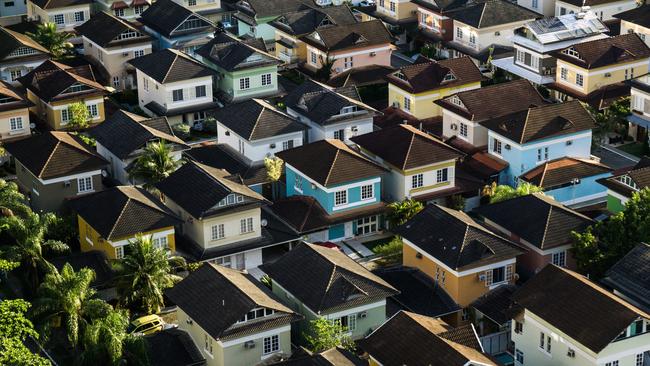
The latest lockdowns in Sydney and Melbourne have again stayed the hand of regulators from intervening to cool prices in residential markets.
In Australia we have just seen a one-year jump of 16 per cent, our biggest increase in more than two decades.
Overseas, a new OECD report on house prices globally says that annual house price growth hit 9.4 per cent, the highest jump in three decades.
Despite the lockdowns and the nationwide restraint on commercial activity, CoreLogic reported on Tuesday that auction clearances are not just returning to normal, they are the strongest they have been for four years – clearance rates are 75 per cent against a historic average of 65 per cent. (There is some evidence that sellers lose enthusiasm in lockdowns, but not buyers.)
And though owner-occupier activity numbers saw a dip last month, it was almost entirely due to the fading effects from the HomeBuilder scheme. As Shane Oliver at AMP Capital puts it: “The resurgence in investor financing and continuing strength in demand from owner-occupiers point to further near-term strength in home prices.”
Paul Ryan, economist at realestate.com.au, goes further. He says: “Demand continues to outstrip supply, which is driving price growth. The number of high-intent buyers on Realestate.com.au remains very high, significantly above levels seen before the pandemic, despite the price growth over the past year.” (Realestate.com.au is majority-owned by News Corp Australia, owner of The Australian).
The key point is of course that home prices all over the world are spiking because of the lockdowns – or to be precise, because of the conditions the lockdowns unleash: the rush for defensive assets, the desire for bigger homes, the extension of artificially low interest rates through money-printing programs. Just consider locked-down Sydney, where prices rose 24 per cent in the past 12 months (against 16 per cent nationwide) and over this calendar year are expected to rise 22 per cent.
It’s a market signalling furiously for central bank intervention to stabilise prices.
As Tim Toohey, head of macro and strategy at Yarra Capital, explains: “The RBA has to be flexible. These are remarkable times and in any other circumstance we would have expected moves on the housing market already.”
Moreover, it is only through the RBA and associated intervention policies from the prudential regulator the Australian Prudential Regulation Authority that we can expect any action.
As Roger Montgomery of Montgomery Investment Management says in a new report: “Note the government’s response to complaints about collapsing housing affordability is never ‘You’re right, we need to bring prices down’. Instead the policy response has been to extend greatest assistance to property market debutants.”
As it stands it would have been contradictory for the RBA to try to cool house prices with restraints on home lending while printing money at the same time.
No wonder then Tuesday’s RBA statement – which again indicated no change in interest rate settings – carries a clear determination to quit money printing. Or as the economists would phrase it, to withdraw from quantitative easing.
Many analysts had expected the RBA – having deferred direct intervention in residential lending – would also defer the day of “tapering”, but not so: it is sticking to its guns, with the taper to begin next month.
So the bond-buying taper can be seen within the confines of the residential property market as a first step. The second step will be a new version of macroprudential moves such as lending limits, which worked well when they were first tested at the peak of the last cycle in 2015. “This time any intervention will look quite different,” says Toohey.
During the 2015 peak, the market was dominated by investors and the RBA cut investor lending limits, along with interest-only loan limits. This time around the market is dominated by owner-occupiers and any clampdown will most likely include loan-to-valuation ratios or even on loan-to-income ratios.
The longer the wait, the more severe those new rules are likely to be.








Don’t be misled for one moment by the apparent lack of news from the Reserve Bank this week: every month the RBA delays moving on house prices the worse the medicine will ultimately be for homeowners and investors alike.